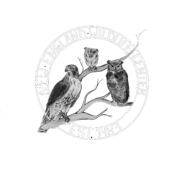One week we had a surprise patient arrive. A woman in the community brought in a tiny Spring Peeper with an interesting story. She had an orange tree in a pot that she had brought inside for the winter two months ago. Three days ago, a Spring Peeper appeared. He must have crawled out of the dirt once he started to warm up. Because of this disturbed brumation, he was brought to us to stay until Spring when we can release him outdoors. He got me thinking about amphibians and their role in our environment.
Amphibians include Salamanders, Frogs and Toads. In Massachusetts, The Marbled Salamander is threatened, and the Blue Spotted Salamander is a species of special concern (their numbers are declining). The word amphibian is Greek meaning “to live a double life”. Amphibians undergo a metamorphosis. They begin life in water and then live on land as adults. They need a fresh aquatic ecosystem to survive. Amphibians all share the following characteristics: they breathe and absorb water through their very thin scale less skin, they are small vertebrates that need a moist environment, they are cold-blooded (ectothermic) so they can’t regulate their own body temperature, they have gaseous exchange through their skin and their eggs are fertilized outside their body. In winter they sink deep in water or hibernate at the bottom of ponds to stay warm. Salamanders also have the ability to melt ice around them by converting glycogen to glucose.
Amphibians are carnivores. They will eat anything that moves that they can swallow. This includes spiders, earthworms, and beetles. They live in swamps, streams, forests and vernal pools. They fertilize and develop their eggs and larvae in water then move to land as adults. They have special skin that must remain moist to regulate their functioning. If it gets too much sun, the cells will get damaged. Too much wind will cause the skin to dry and dehydrate.
As a result of having this fragile skin, amphibians are the first to die off when habitats are disturbed or contaminated with chemicals like weed killers. They are like the “canary in the coal mine”. They are an indicator species to the health of the environment. Over one-half of all frog species are in danger of extinction.
Vernal pools which are seasonal pools of water, are essential breeding habitats for amphibians. Because of their importance in the environment, they are considered protected wetlands. To achieve this protected status, they must first be certified, a process started by a homeowner. Most vernal pools are destroyed by ever-expanding development of housing and businesses.
At the Cape Wildlife Center, we do not often see amphibians, so when we do it is a nice treat. Last year we cared for a yellow spotted salamander that had it’s leg traumatically amputated. We cared for him until Springtime, and during those months he was able to begin to grow a new limb. It was amazing to watch and document and he was ready for release when the weather turned warm.
As some of our smallest wildlife, amphibians are sometimes overlooked. When you are out walking, take the time to look in vernal pools, or wetlands to see some of these amazing little creatures.
To learn more about the Cape Wildlife Center or help in their mission, visit www.capewildlifecenter.com or call 508 362-0111. Stop in to visit our gift shop open 7 days a week 9-4.
Caryn Ritchie is the volunteer coordinator for the Cape Wildlife Center and holds both a Massachusetts rehabilitator’s license and a federal permit to rehabilitate migratory birds.

Recent Comments